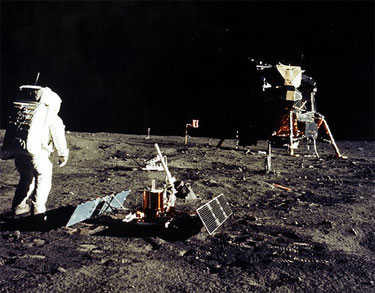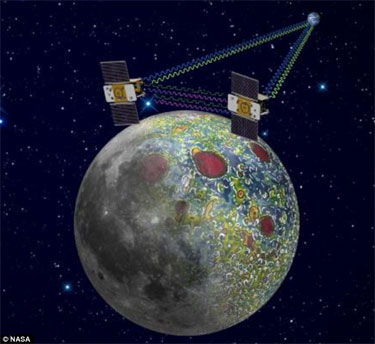
Source: A Walk on the Moon During Apollo 11 (NASA, July 20, 1969),
NASA's Marshall Space Flight Center, Flickr

Source: A Walk on the Moon During Apollo 11 (NASA, July 20, 1969),
NASA's Marshall Space Flight Center, Flickr
When you look up at the night sky and see the moon, have you ever wondered. "What is it made of? How did it get there?" If you have, you are not alone. Scientists are still trying to answer these questions. The moon is considered a satellite. Except for Mercury and Venus, all of the planets have natural satellites, called moons. Earth's moon is called Luna.
On July 20, 1969, the United States' Apollo 11 became the first manned mission to land on the moon. There have been six manned landings and numerous unmanned landings since the first mission. By studying lunar rocks brought back to Earth, scientists were able to determine that the moon is about 4.6 billion years old. The composition of the lunar rocks was found to be similar to the composition of the Earth's mantle.
How the moon was formed has been studied and thought about for many years. Before the Apollo's rock samples gave scientists insight into the composition of the moon, there were three possible explanations about the formation of the moon.
Scientists have found problems with each of these theories, which led to the development of another theory. The current theory is The Giant Impact Theory, which is believed by most scientists. This theory proposes that a large, Mars-sized object collided with the Earth while the Earth was still forming; the collision was so strong that part of the Earth's mantle was blasted into orbit around Earth, forming the moon. This theory explains why the lunar rocks brought back from the Apollo mission have the same composition as the Earth's mantle.
![]() Watch this short video to learn more about The Giant Impact Theory.
Watch this short video to learn more about The Giant Impact Theory.
Source: Moon Origin, Leonardogerard, YouTube

Source: GRAIL Spacecraft, NASA
NASA is still exploring and studying the moon. In fact, on September 10, 2011, NASA launched the GRAIL (Gravity Recovery and Interior Laboratory) mission to the moon. According the NASA Grail Spacecraft website, the GRAIL mission consists of two solar-powered spacecraft that will fly tandem (one right behind the other) orbits around the moon to measure its gravity field. GRAIL will give scientists a better understanding of how Earth and other rocky planets in the solar system formed.